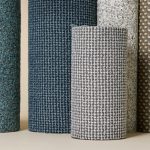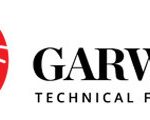Technical Textiles
Beyond the long-established large end markets of clothing and fashion as well as home and interior textiles, textile and clothing products have over recent decades conquered large additional end markets which are generally referred to as technical textiles or technical applications. While no unambiguous and universally accepted definition for technical textiles exists, it is generally assumed that this sector comprises all uses and end markets in which textile materials are applied primarily for their functional rather than their aesthetic features.

In the following paragraphs the main technical textile application sectors and their most significant product categories are enlisted. The technical textile market categories refer to the denomination initially introduced by Messe Frankfurt GmbH, organiser of the TechTextil trade fair, and now widely referenced across the industry.
Protection, sports & leisure (Protech Sporttech Clothtech)

Comprises textile materials and products applied in:
- protective clothing and equipment for professionals operating in hazardous working environments,
- clothing and equipment for professionals and consumers engaged in sports and physical outdoor activities
- clothing products or parts thereof providing primarily a technical function
Protective clothing & equipment for high & multi-risk environments
- Heat and flame protection gear for fire fighters, military and civil defence staff, workers in the energy, petro-/chemical, basic metals and heavy manufacturing industries
- CBRN protection gear for military and civil defence staff, first responders, workers in the nuclear energy and chemical industry
- Ballistic and explosive protection gear military & civil security staff
Protective clothing & equipment for medium risk environment
- High-visibility wear (first responders, construction workers…)
- Fall and impact protection wear and devices (construction workers, first responders)
- Buoyancy and flotation equipment for off-shore workers
Workwear & low-risk protective clothing
- Professional wear with cut, puncture & abrasion resistance
- Foul weather protection clothing
- General workwear providing a combination of comfort & function
Sports and functional leisure wear
Health & wellbeing (Medtech)

Comprises textile-based products applied in the medical, healthcare and consumer well-being markets.
Medical devices
- External application materials & devices (wound dressings, compresses, orthodics…)
- Internal application materials & devices (implantable structures and materials)
- Medical equipment & wear (gowns, gloves, masks, filters, bags, pads, wipes…)
Hygiene products
- Female and infant hygiene, incontinence products (mostly nonwovens)
- Towels, wipes, pads (mostly nonwovens)
- Household cleaning equipment
Consumer health products
- Functional wear (compression stockings…)
- Braces and bandages
- Cosmetotextiles (textiles and clothing with intrinsic cosmetic and beauty functionalities)
Functional interiors (Hometech)
Comprises textile-based products applied in the home and interior markets used primarily for the functional rather than their aesthetic functions.
Floor covering:
- Functional and smart carpets (insulation, acoustics, guidance and detection, indoor climate, safety…)
- Textile based underfloor insulation materials
Wall & window dressing:
- Functional wall covers (for insulation, acoustics, lighting)
- Functional curtains and blinds (for light and temperature management, indoor air quality, acoustics…)
- Textile based under-surface insulation materials
Furniture:
- Functionalised upholstery
- Textile-based furniture parts
Bedding:
- Functional pillows and bed sheets (anti-microbial, anti-mite/mosquito, anti-allergic, odour emitting)
Technical Markets
Comprises textile materials and products applied as components, sub-systems or final products in a wide range of industrial sectors, in agriculture and technical services.
Automotive & other transport sectors (Mobiltech)

Textiles are widely used in all industries manufacturing components or complete systems for human or goods transport such as personal cars, trucks and buses, rail-based vehicles (trains, tramways, subways), waterborne systems (transport and passenger ships and boats, leisure boats and yachts, hovercrafts) and airborne transport systems (aeroplanes, spacecraft, helicopters, balloons and gliders). Conventional textiles are typically applied for seats and other interiors, whereas technical textiles have wide application potential for structural and functional parts where their strength, light weight, flexibility or elasticity often makes them preferred materials choices.
Typical transport applications for textiles are:
- Automotive: seats and other interiors, safety belts, airbags, tyre cords, transmission belts, truck covers, transport nets and bags, fibre composite parts for body or other structural components
- Railway: seats and other interiors, cargo nets, hoses, fibre composite parts
- Aerospace: seats and other interiors, safety belts, life vests, cargo nets, hoses, fibre composite parts
- Waterborne: seats and other interiors, (mooring) ropes, cargo and safety nets, sails, large bags, flexible tanks, inflatable structures and devices, life vests and floating devices
Construction & architecture (Buildtech, Geotech)
Building and infrastructure construction as well as earth works are increasingly exploring fibre and textile-based materials for applications in which the strength, flexibility, light weight and functionalization potential of these materials makes them preferred choices.
However apart from a few long-established applications such as tents, roofs and sunshades or geotextiles for soil reinforcement, most construction applications are in relatively niche and pilot markets. However several of these markets can become very large over time. Therefore the European Technology Platform has set up a specific expert group in this domain to foster wider textile use in the building and construction sector.
This group has identified three main application areas for textiles in construction and architecture, where their potential market value has been assessed to be significant. These are shown in the below table.
Agriculture, energy & environment (Agrotech, Oekotech)
The agriculture, energy and environmental protection markets are like the construction a relatively early-stage but potentially very large application field for technical textiles.
Typical current and potential future applications are:
Agricultural productivity:
- Plant and crop protection from adverse climate impact (e.g. sun, rain, hail, snow, frost), animals (insects, birds, rodents,…), pests, diseases and weeds using textile-based screens, nets, crop and ground covers
- Climate control and reduction of energy use in greenhouses using textile-based screens, shades or covers
- Plant growth support, guiding, vertical/urban agriculture using ropes, nets and textile-based growth-support substrates
- Efficient irrigation and fertilisation using textile-based hoses and pipes
- Handling, transport, packaging and storage of plants and crops such as harvesting nets, storage and transport bags, sacks, nets and other textile-based packaging materials
Rural water management:
- Water harvesting systems using textile-based rain, fog, dew collectors such as screens, nets and canvases
- Water storage and transport by textile-based artificial ponds, flexible tanks or covers
- Filtration and cleaning of water via textile-based filters
- Protection of (ground) water from contamination (e.g. landfills, floods or spills) using textile membranes

Environmental Protection:
- Protection against landslides, avalanches and soil erosion via nets, ropes and various geotextile structures
- Landscaping/re-cultivation of damaged soils using textile-based seed mats, ground covers and growth supports
- Urban plant cultivation using textile-enabled green roofs and walls
- Decontamination of soil using textile membranes
Energy generation, transmission and storage:
- Fibre-reinforced materials for gas and wind turbines
- Chimney lining for power plants
- Flexible pipes and hoses for liquid fuel transport and flexible fuel tanks
- Flexible solar cells
- Mooring ropes of floating platforms for deep sea oil and gas exploration and production
Industrial applications (Indutech, Packtech)

Beyond the aforementioned industrial sectors technical textiles are used for very specific applications in almost all industries and sectors and the below listed examples are just an non-exhaustive selection of the most typical textile uses:
- Conveyor belts for processing, assembly and logistic operations
- Filters for gases, liquids or solids in sectors such as water processing, food and beverage manufacturing, chemicals, pharmaceuticals and life sciences, waste processing
- Bags, nets, covers and other flexible packaging for industrial materials and products, food and other consumer products
- Machine clothing for the paper industry
- Flexible screens for the printing industry






